🚀 Unlock Astonishing Results: Your Ultimate Guide to AI Email Marketing for Beginners!
Welcome to the future of email communication! If you’re new to the scene and wondering how to make your emails truly stand out and deliver results, you’ve come to the right place. We’re about to dive into the fascinating world of AI email marketing. This isn’t just another buzzword; it’s a revolutionary approach that can transform your email strategy from a time-consuming chore into a powerhouse of efficiency and connection. For beginners, understanding how to leverage email automation and artificial intelligence can seem daunting, but we’ll break it down into simple, actionable steps to help you increase engagement and achieve your marketing goals.
Imagine sending emails that feel like they were written personally for each recipient, arriving at the exact moment they’re most likely to read them, and packed with content they genuinely care about. That’s the power of AI in email marketing. It’s about working smarter, not harder, and letting intelligent technology handle the heavy lifting so you can focus on the bigger picture.
📜 Table of Contents
- 🧠 Decoding AI Email Marketing: What’s All the Buzz About?
- ✨ The Magic of AI in Your Inbox: Core Capabilities Explained for Beginners
- 🎯 Beyond Just a Name: AI-Powered Hyper-Personalization
- 🤖 Your 24/7 Email Assistant: Mastering Email Automation
- 🔮 Peeking into the Future: AI for Smarter Email Decisions
- ✍️ AI as Your Creative Partner: Crafting Compelling Email Content
- 🛠️ Getting Your Hands Dirty: Practical First Steps in AI Email Marketing
- 🛒 Choosing Your AI Toolkit: Top Platforms for Newcomers
- 👥 Understanding Your Audience Like Never Before with AI
- 🚀 Launching Your First AI-Enhanced Email Campaign
- ⚡ Supercharge Your Campaigns: Next-Level AI Strategies (Simplified)
- 🧪 No More Guesswork: AI-Driven A/B Testing for Optimal Results
- 📈 Predictive Power: Knowing What Your Subscribers Want Next
- 🗺️ Guiding Stars: Mastering the Customer Journey with AI Automation
- 💔 Winning Them Back: AI for Re-engaging Cold Leads
- 🛡️ Playing it Smart & Safe: Ethics and Best Practices in AI Email Marketing
- 🔒 Data Privacy Demystified: Understanding GDPR, CCPA, and Beyond
- 🚫 Sidestepping the Shadows: How to Avoid AI Bias
- 🤝 The Human Touch: Blending AI with Authenticity
- 🌌 The Exciting Horizon: What’s Next for AI in Email Marketing?
- 👨🚀 Smarter Assistants and Deeper Insights on the Way
- 📧 The Dawn of Hyper-Contextual and Interactive Emails
- 🏁 Your AI Email Marketing Journey Starts Now!
🧠 Decoding AI Email Marketing: What’s All the Buzz About?
So, what exactly is AI email marketing? At its core, it’s about using artificial intelligence – think smart computer programs – to make your email marketing efforts more effective, efficient, and engaging. If you’re a beginner, this might sound complex, but the fundamental idea is simple: AI helps you understand your audience better and communicate with them in a more personalized and timely manner. This, in turn, is a fantastic way to increase engagement with your emails.
Traditionally, email marketing involved a lot of manual work: crafting generic messages for large lists, guessing the best times to send them, and hoping for the best. AI changes all that. It can analyze vast amounts of data – like how people interact with your past emails, what they look at on your website, or their purchase history – to uncover patterns and insights that would be impossible for a human to spot alone.
This means AI can help you automate repetitive tasks, like sending welcome emails or follow-ups, freeing up your valuable time. It can also help you personalize your messages at a scale previously unimaginable, making each subscriber feel uniquely valued. The result? Emails that are more relevant, more engaging, and ultimately, more successful in achieving your goals, whether that’s driving sales, building brand loyalty, or simply sharing your message. The integration of email automation through AI is no longer a luxury but a pathway to more meaningful connections.
The journey from manual email blasts to AI-driven strategies has been transformative. In the early days, it was all about sending the same message to everyone. Then came segmentation and basic automation, allowing for slightly more targeted communication. Now, with AI, we’re in an era of hyper-personalization, where machine learning algorithms can optimize everything from send times to the specific content each individual sees. This evolution is all about getting closer to what the customer truly wants and needs.
✨ The Magic of AI in Your Inbox: Core Capabilities Explained for Beginners
Artificial intelligence isn’t just a futuristic concept; it’s a practical set of tools that can revolutionize how you approach email. For beginners in AI email marketing, understanding these core capabilities is the first step towards leveraging its power to increase engagement and streamline your email automation efforts.
🎯 Beyond Just a Name: AI-Powered Hyper-Personalization
Personalization in email marketing used to mean simply adding a subscriber’s first name to the subject line. AI takes this to a whole new galaxy. Hyper-personalization, fueled by AI, means tailoring almost every aspect of an email to an individual’s preferences, behavior, and history.
Imagine an online bookstore. Instead of sending a generic “new arrivals” email to everyone, AI can analyze a subscriber’s past purchases and Browse history to send them a curated list of books by their favorite authors or in genres they’ve shown interest in. This level of relevance is what makes recipients feel understood and valued. AI algorithms can dynamically adjust email content in real-time, ensuring that the images, product recommendations, and even calls to action are perfectly suited to each user. This could involve showcasing different products, offering specific discounts based on loyalty, or highlighting articles related to their recent website activity.
AI achieves this by sifting through data points like past email interactions (opens, clicks), website activity (pages viewed, time spent), purchase history, and even demographic information. This allows for incredibly granular segmentation, moving beyond broad categories to create micro-segments or even one-to-one communication. The goal is to make every email feel like a personal conversation, not a mass broadcast.
🤖 Your 24/7 Email Assistant: Mastering Email Automation
One of the most immediate benefits of AI email marketing for beginners is its ability to automate tasks that would otherwise consume hours of your time. Think of AI as your tireless email assistant, working around the clock to ensure timely and relevant communication with your audience. This is where email automation truly shines.
AI-powered drip campaigns, for example, can nurture new leads by sending a pre-defined sequence of emails, but with a twist. AI can adjust the timing or content of these emails based on how the recipient interacts with previous messages. If someone clicks on a specific link in a welcome email, the AI might trigger a follow-up email with more information on that topic. Similarly, abandoned cart emails can be automatically sent to users who leave items in their online shopping cart, perhaps even with a personalized incentive to complete the purchase.
Beyond drip campaigns, AI can automate follow-ups based on a wide array of triggers. For instance, if a subscriber hasn’t engaged with your emails for a while, AI can flag them and initiate a re-engagement campaign designed to win them back. It can also manage email list hygiene by identifying and removing inactive or invalid email addresses, which is crucial for maintaining good deliverability. This automation isn’t just about saving time; it’s about ensuring no opportunity to connect with your audience is missed.
🔮 Peeking into the Future: AI for Smarter Email Decisions
Wouldn’t it be great if you could predict how your subscribers will react to an email before you even send it? While AI isn’t quite a crystal ball, its predictive analytics capabilities come pretty close. This is a game-changer for anyone looking to increase engagement and optimize their AI email marketing strategy.
AI algorithms can analyze historical data to forecast various outcomes. For instance, AI can predict the best time to send an email to an individual subscriber based on their past open patterns, ensuring your message lands in their inbox when they’re most likely to see it. This is far more sophisticated than simply picking a “generally good” time for your entire list. Some AI tools can even predict the likelihood of a subscriber opening an email, clicking a link, or making a purchase based on the subject line, content, and their individual profile.
Furthermore, AI can help with predictive segmentation, identifying subscribers who are most likely to convert, those at risk of churning (unsubscribing), or those who might be interested in a particular product or service they haven’t discovered yet. This allows you to proactively tailor your communication, perhaps by sending a special offer to a high-potential lead or a gentle re-engagement message to someone showing signs of disinterest. These predictive insights empower you to make data-driven decisions rather than relying on guesswork.
✍️ AI as Your Creative Partner: Crafting Compelling Email Content
Writing engaging email copy and attention-grabbing subject lines can be a challenge, even for experienced marketers. AI can now act as a powerful creative partner, assisting in the generation and optimization of email content. This capability is particularly exciting for beginners in AI email marketing who might be looking for ways to improve their open rates and increase engagement.
AI tools, especially those leveraging Natural Language Processing (NLP) and Natural Language Generation (NLG), can help you craft multiple subject line variations and predict which ones are most likely to perform well with your specific audience. They can analyze factors like emotional tone, length, and the use of keywords to optimize for maximum impact. Some advanced AI can even generate entire email drafts based on a few prompts or objectives you provide, which you can then refine and personalize.
Beyond just generating text, AI can assist with content personalization within the email body. For example, it can dynamically insert product recommendations, relevant blog snippets, or personalized calls to action based on each subscriber’s data. Sentiment analysis, another AI capability, can help you understand the emotional tone of your own content and even gauge how subscribers might react to it, allowing you to fine-tune your messaging for better resonance. While AI doesn’t replace human creativity, it certainly augments it, helping you create more effective content faster.
🛠️ Getting Your Hands Dirty: Practical First Steps in AI Email Marketing
Embarking on your AI email marketing journey is exciting! While the technology is advanced, getting started doesn’t have to be overwhelming. Here are some practical first steps for beginners to dip their toes into AI-powered emails, enhance email automation, and begin to increase engagement.
🛒 Choosing Your AI Toolkit: Top Platforms for Newcomers
The market is brimming with email marketing platforms that have integrated AI capabilities. For a beginner, the key is to choose a tool that is user-friendly, offers good support, and aligns with your budget and current needs. Many popular platforms now offer AI features as part of their standard packages or as accessible add-ons.
Some well-regarded platforms that incorporate AI features include:
- Mailchimp: Known for its ease of use, Mailchimp offers AI-powered features like send-time optimization, subject line helpers, content optimizers, and predictive segmentation. Their AI can help you understand what content resonates and when to send it.
- HubSpot: A comprehensive CRM platform, HubSpot provides AI tools for email marketing automation, A/B testing, personalization, and lead scoring. Its AI helps in crafting adaptive testing and optimizing email campaigns based on performance data.
- Brevo (formerly Sendinblue): Brevo offers AI-driven send time optimization, helping you automatically send emails when your contacts are most active. They also focus on automated segmentation and personalized workflows.
- ActiveCampaign: Strong in automation, ActiveCampaign uses AI for predictive sending, predictive content, and lead scoring, enabling highly personalized customer experiences.
- Klaviyo: Particularly popular with e-commerce businesses, Klaviyo leverages AI for advanced segmentation, predictive analytics (like churn risk and customer lifetime value), and personalized product recommendations.
- Constant Contact: This platform offers AI-powered content generation tools to help you write emails faster, optimize subject lines, and even generate social media posts from your email content.
When choosing, consider factors like the size of your email list, the complexity of automation you envision, and whether you need e-commerce specific features. Many platforms offer free trials or entry-level plans, allowing you to experiment before committing.
👥 Understanding Your Audience Like Never Before with AI
The foundation of successful email marketing, AI-powered or otherwise, is a deep understanding of your audience. AI supercharges this process by enabling more sophisticated list management and segmentation. This is crucial if you want to increase engagement through relevant messaging.
AI can help you maintain a healthy email list through automated list cleaning. It identifies and helps you manage invalid email addresses, inactive subscribers, and even spam traps, which can harm your sender reputation and deliverability. This ensures your messages are reaching genuinely interested people.
Beyond cleaning, AI excels at segmentation. Instead of relying on basic demographic data, AI can segment your audience based on their behavior (e.g., purchase history, website interactions, email engagement levels), their predicted interests, or even their likelihood to take a specific action (like making a purchase or unsubscribing). This is known as predictive segmentation or behavioral segmentation. For example, AI could automatically create a segment of “highly engaged customers likely to buy premium products” or “subscribers at risk of churn who need a special re-engagement offer.” This level of detail allows for incredibly targeted and effective AI email marketing campaigns.
Predictive lead scoring is another AI feature that helps you understand your audience. AI assigns a score to each lead based on their engagement and likelihood to convert, allowing your sales and marketing teams to prioritize their efforts on the most promising prospects.
🚀 Launching Your First AI-Enhanced Email Campaign
Once you’ve chosen a tool and started to understand your audience better with AI insights, it’s time to launch your first AI-enhanced campaign. Don’t try to do everything at once. Start simple and build from there.
A great starting point could be AI-powered send-time optimization. Most modern email platforms with AI capabilities offer this feature. Simply enable it, and the AI will analyze individual subscriber behavior to determine the optimal delivery time for each person on your list. This is a relatively easy win that can immediately help increase engagement.
Another simple first step is to use AI-assisted subject line generation or optimization. Many tools allow you to input your email’s topic, and the AI will suggest several subject line options, often with predictions about their potential performance. Experiment with these suggestions and see how they impact your open rates.
You could also start with a basic automated welcome series for new subscribers, using AI to personalize some elements. For example, if your sign-up form asks for areas of interest, AI can help tailor the content of the welcome emails based on those selections. Even small touches of personalization, guided by AI, can make a big difference in how new subscribers perceive your brand. The key is to begin experimenting with the AI email marketing features available to you and gradually incorporate more advanced email automation as you become more comfortable.
⚡ Supercharge Your Campaigns: Next-Level AI Strategies (Simplified)
Once you’ve mastered the basics of AI email marketing, you’re ready to explore more advanced strategies that can truly supercharge your campaigns. These techniques, while sophisticated, are becoming increasingly accessible through modern AI tools and can dramatically help you increase engagement and optimize your email automation.
🧪 No More Guesswork: AI-Driven A/B Testing for Optimal Results
A/B testing, or split testing, is a cornerstone of email marketing optimization. It involves sending different versions of an email (e.g., with different subject lines, calls to action, or images) to segments of your audience to see which performs best. AI takes A/B testing to a whole new level by automating and refining the process.
Traditional A/B testing can be time-consuming. You have to manually set up the tests, analyze the results, and then apply the learnings. AI-driven A/B testing, often called multivariate testing when multiple elements are tested simultaneously, can automate much of this. AI can continuously test numerous variations of email elements – subject lines, content blocks, CTAs, send times – in real-time and automatically adapt the campaign based on what’s performing best.
For instance, an AI might test five different subject lines on a small portion of your list, quickly determine the winner based on open rates, and then automatically send the winning version to the rest of your subscribers. Some AI tools can even provide predictive insights into how different versions might perform before you even launch the test. This means you’re always sending the most optimized version of your email, leading to better open rates, click-through rates, and conversions, without the extensive manual effort.
📈 Predictive Power: Knowing What Your Subscribers Want Next
As mentioned earlier, AI’s predictive analytics capabilities are incredibly powerful. Going beyond basic predictions like optimal send times, advanced AI can help you anticipate your subscribers’ future needs and behaviors with remarkable accuracy. This is key to proactive AI email marketing and can significantly increase engagement.
AI can analyze patterns in customer data to predict things like:
- Future Purchases: Identifying which products or services a subscriber is likely to be interested in next, allowing you to send targeted recommendations.
- Churn Risk: Detecting subscribers who are showing signs of disengagement and are at risk of unsubscribing or becoming inactive. You can then trigger automated re-engagement campaigns specifically for these individuals.
- Customer Lifetime Value (CLV): Predicting the total value a customer will bring to your business over time, helping you segment and prioritize your high-value customers with special offers or loyalty programs.
- Content Affinity: Understanding which types of content (e.g., blog posts, videos, case studies) are most likely to resonate with different segments of your audience.
By leveraging these predictive insights, you can move from reactive to proactive email marketing. Instead of waiting for a subscriber to abandon their cart, you might identify their hesitation earlier and offer assistance or an incentive. This level of foresight allows for highly personalized and timely email automation that feels almost clairvoyant to the recipient.
🗺️ Guiding Stars: Mastering the Customer Journey with AI Automation
The customer journey isn’t always a straight line. Subscribers interact with your brand across multiple touchpoints – website visits, social media, previous email engagements, purchases, and customer service interactions. AI helps you map and understand these complex journeys and then automate personalized email sequences that guide subscribers effectively through each stage.
AI-powered customer journey mapping involves collecting and analyzing data from all these touchpoints to build a comprehensive picture of each customer’s experience. AI can then trigger dynamic email sequences based on a subscriber’s behavior and their current stage in the journey – whether they’re in the awareness, consideration, decision, or retention phase.
For example, if a new lead downloads an introductory guide (awareness stage), AI can trigger a nurturing sequence that provides more detailed information and case studies (consideration stage). If they then visit a pricing page (decision stage), a different automated email might be sent offering a demo or a special introductory offer. Post-purchase, AI can automate follow-up emails for feedback, offer complementary products, or share tips on how to get the most out of their purchase, enhancing customer retention. This ensures that every communication is relevant to where the customer is in their relationship with your brand.
💔 Winning Them Back: AI for Re-engaging Cold Leads
Every email list has subscribers who go “cold” – they stop opening your emails or interacting with your content. Manually identifying and re-engaging these cold leads can be a daunting task. AI provides an effective solution by automating the identification and re-engagement process.
AI algorithms can monitor subscriber engagement levels in real time. When a subscriber’s engagement drops below a certain threshold, or if they haven’t opened an email in a specific period, AI can automatically flag them as a cold lead. Instead of just letting them languish, AI can trigger a personalized “win-back” or re-engagement campaign.
These AI-driven re-engagement campaigns can be highly sophisticated. They might involve sending a series of emails with different types of content, such as:
- A reminder of the value your emails provide.
- A special offer or discount exclusive to inactive subscribers.
- A survey asking for feedback on why they’ve disengaged and what content they’d like to see.
- Highlighting new features or popular content they might have missed.
AI can test different re-engagement strategies and optimize them based on what works best for different segments of your cold leads. This automated approach to re-engagement is far more efficient and effective than manual efforts, helping you salvage relationships and increase engagement from subscribers who might otherwise be lost.
🛡️ Playing it Smart & Safe: Ethics and Best Practices in AI Email Marketing
As we embrace the power of AI email marketing to personalize experiences and increase engagement, it’s crucial to navigate the landscape responsibly. Using AI ethically and adhering to best practices not only protects your subscribers but also builds trust and safeguards your brand’s reputation. For beginners, understanding these considerations from the outset is vital for sustainable success.
🔒 Data Privacy Demystified: Understanding GDPR, CCPA, and Beyond
AI thrives on data, and email marketing often involves collecting and processing personal information. This makes data privacy a paramount concern. Regulations like the General Data Protection Regulation (GDPR) in Europe and the California Consumer Privacy Act (CCPA) in the U.S. (and similar laws emerging globally) set strict rules for how businesses handle consumer data.
For beginners, here’s a simplified breakdown of key principles:
- Consent is Key: You must obtain explicit and informed consent from individuals before collecting their data and using it for AI-powered email marketing. This means clear opt-in mechanisms, not pre-ticked boxes or confusing language.
- Transparency: Be open about how you’re using AI and what data you’re collecting. Your privacy policy should clearly explain this in simple terms. Users have the right to know what information you hold about them.
- Right to Access and Erasure: Individuals generally have the right to access the data you’ve collected about them and request its deletion (the “right to be forgotten”). Your systems, including your email automation workflows, should be able to accommodate these requests.
- Data Minimization: Only collect and process the data that is strictly necessary for your stated purposes. Don’t hoard data you don’t need.
- Security: You are responsible for protecting the personal data you collect. Implement robust security measures to prevent data breaches.
Many AI email marketing platforms are designed with features to help you comply with these regulations, such as consent management tools and data preference centers. However, the ultimate responsibility for compliance lies with your business. Staying informed about data privacy laws in the regions you operate is crucial.
🚫 Sidestepping the Shadows: How to Avoid AI Bias
AI algorithms learn from the data they are trained on. If that data reflects existing societal biases (related to gender, race, age, location, etc.), the AI can inadvertently perpetuate or even amplify these biases in its outputs. In AI email marketing, this could lead to unfair targeting, exclusion of certain demographics, or an overall skewed customer experience.
For example, if an AI is trained on historical data that shows a certain product was predominantly purchased by one demographic, it might wrongly conclude that other demographics are not interested, thus excluding them from relevant marketing messages. This not only limits your reach but can also be discriminatory.
To mitigate AI bias:
- Strive for Diverse Training Data: Ensure the data used to train your AI models is as representative as possible of your desired audience.
- Regular Audits: Periodically review the outcomes of your AI-driven campaigns and segmentation. Are certain groups being consistently overlooked or unfairly targeted?
- Human Oversight: Don’t let AI operate in a black box. Marketing teams should review and validate AI-driven decisions, especially those related to segmentation and personalization, to ensure fairness.
- Ethical AI Guidelines: Develop internal guidelines for the ethical use of AI in your marketing efforts.
The goal is to ensure your AI email marketing efforts are inclusive and fair, providing equal opportunities for all subscribers to benefit from your communications.
🤝 The Human Touch: Blending AI with Authenticity
While AI can automate and personalize emails to an incredible degree, there’s a risk that over-reliance on AI-generated content can make your communications feel impersonal, robotic, or lose your brand’s unique voice. Maintaining authenticity is key to building genuine connections and trust with your audience.
The most effective AI email marketing strategies often involve a collaboration between AI and human creativity.
- AI as an Assistant, Not a Replacement: Use AI tools to generate ideas, draft initial content, optimize subject lines, or analyze data. But always have a human marketer review, refine, and inject the brand’s personality, empathy, and unique storytelling style into the final message.
- Define Your Brand Voice: If you use AI for content generation, ensure it’s trained or guided by your specific brand voice guidelines (tone, style, vocabulary).
- Personalization with Purpose: AI enables deep personalization, but ensure it’s used meaningfully. Personalization that feels intrusive or creepy can backfire. Focus on providing genuine value.
- Test and Listen: Pay attention to subscriber feedback and engagement metrics. If your emails start to feel “off” or engagement drops, it might be a sign that the balance between AI and human input needs adjustment.
Remember, AI is a tool to enhance human capabilities, not to entirely replace the nuanced understanding and creativity that humans bring to communication. The goal is to increase engagement by being both smart and relatable.
🌌 The Exciting Horizon: What’s Next for AI in Email Marketing?
The world of AI email marketing is constantly evolving. What seems cutting-edge today will be standard practice tomorrow. For beginners and seasoned marketers alike, keeping an eye on future trends is exciting and essential for staying ahead. We can expect AI to bring even more sophistication to email automation and provide new avenues to increase engagement.
👨🚀 Smarter Assistants and Deeper Insights on the Way
The AI tools we use today are just the beginning. We’re likely to see the rise of even more intelligent AI-powered virtual email assistants. These assistants won’t just schedule emails or suggest subject lines; they might autonomously manage entire campaign workflows, from strategy and content creation to real-time optimization and reporting, with minimal human intervention.
Imagine an AI assistant that not only drafts personalized email copy but also understands the emotional sentiment of subscriber replies and suggests or even drafts appropriate follow-up responses. These tools will likely leverage more advanced Natural Language Processing (NLP) and machine learning to understand context and nuance with greater accuracy.
The depth of insights AI provides will also continue to grow. Future AI systems might offer even more granular predictions about individual customer behavior, identify emerging micro-trends in your audience, or automatically pinpoint opportunities for new product development based on email interactions and feedback. This will allow for an unprecedented level of proactive and data-driven decision-making in email marketing.
📧 The Dawn of Hyper-Contextual and Interactive Emails
The future of AI in email is also about making the email experience itself more dynamic and engaging. We’re moving towards a future of hyper-contextual emails, where the content of an email could change in real-time based on when and where the subscriber opens it, or even based on external factors like current weather or live inventory levels.
Think about an email from a travel company. With hyper-contextual AI, the recommended destinations or flight deals could dynamically update based on the subscriber’s current location when they open the email or real-time availability. This ensures the information is always ultra-relevant.
Furthermore, AI is paving the way for more interactive email experiences. Technologies like Accelerated Mobile Pages (AMP) for Email already allow for app-like functionality within emails (e.g., filling out forms, Browse carousels, responding to polls directly in the inbox). AI will enhance this by personalizing these interactive elements. We might even see AI-generated personalized video content embedded directly into emails, or AI-powered voice interactions where users can respond to emails using voice commands. These advancements will make emails less of a static message and more of an engaging, interactive experience, significantly boosting opportunities to increase engagement.
The integration of AI with other marketing channels will also become more seamless, creating true omnichannel experiences where email is perfectly synced with social media, SMS, and website interactions, all orchestrated by intelligent email automation systems. Even the Internet of Things (IoT) could play a role, with smart devices triggering personalized email communications based on real-world user behavior.
🏁 Your AI Email Marketing Journey Starts Now!
Stepping into the realm of AI email marketing might seem like a giant leap, especially if you’re just starting out. However, as we’ve explored, the core principles are about making your communication more personal, timely, and relevant – goals that every marketer strives for. AI simply provides a powerful, intelligent toolkit to achieve these goals more efficiently and effectively than ever before.
From smart email automation that saves you precious time, to hyper-personalization that makes every subscriber feel seen, and predictive analytics that guide your strategy, AI is reshaping what’s possible. The ability to craft better content, optimize send times, segment audiences with incredible precision, and continuously learn and improve your campaigns is now within reach, even for beginners. This technology is a direct path to help you increase engagement and see tangible results from your email efforts.
Remember, the journey starts with small steps. Choose a user-friendly platform, experiment with one or two AI features, and always keep your audience and ethical considerations at the forefront. The balance between AI’s analytical power and human creativity is where the true magic happens.
The future of email is intelligent, personalized, and incredibly exciting. By embracing AI email marketing now, you’re not just adopting new technology; you’re investing in building stronger, more meaningful relationships with your audience, one smart email at a time. So, take that first step – your AI-powered email success story is waiting to be written!
Reference video:

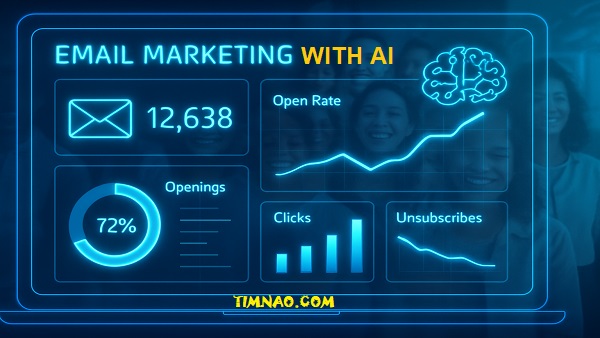
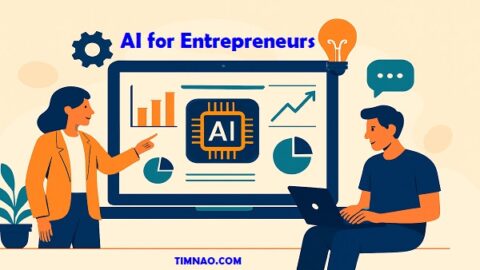

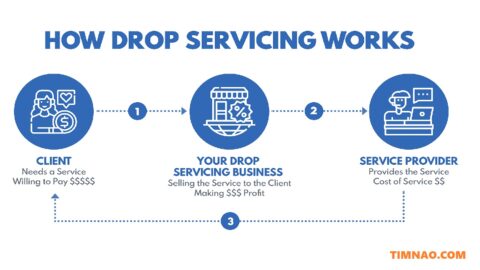

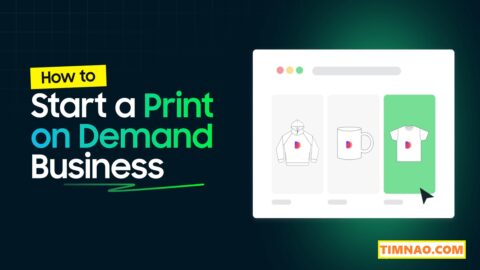

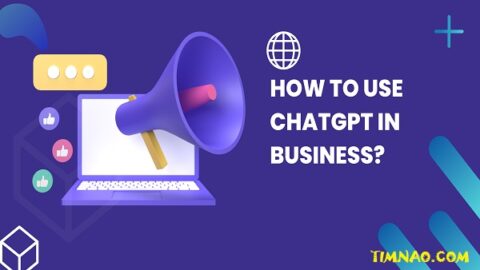

I very delighted to find this internet site on bing, just what I was searching for : D also saved to my bookmarks.